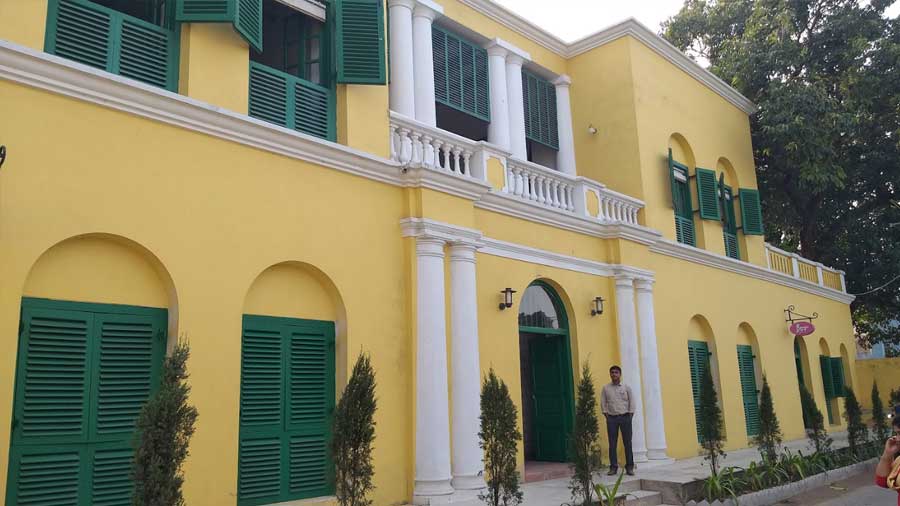Unlike the British, Dutch, French or Portuguese, the Danish settlement in India is much less talked about, perhaps due to its limited success.
Investors from Denmark and the Danish royal family targeted India as an important trading point from the 17th century onwards. The Danes first set foot on Indian shores in 1616, when traders arrived in Madras.
It is a lesser-known fact that there was a Danish East India Company (DEIC) too, which came to Bengal in 1698 at a place called Gondalpara, near Bhadreshwar. They received a sanction for trading from local Mughal governor Azim-us-Shan (grandson of Aurangzeb). They left Bengal in 1714.
However, many Danish traders chose to stay back at Chandernagore, which was a French trading point. Thanks to Denmark’s neutral position in the wars of Europe of that time, Danish traders had good relations with the British East India Company. So, business relations between Denmark and Bengal were not completely cut off in 1714.
Trading hub
The DEIC was finally abolished in 1732 and a new company, called the Danish Asiatic Company, was formed. This company entered Bengal in 1755 with special sanction from Alivarhi Khan, the then nawab of Bengal. On October 8, 1755, traders hoisted the Danish flag at Serampore and renamed the place ‘Frederic-nagar’ after their king, Frederick V.
As a Danish trade point, Serampore soon became a transactional hub for sugar, indigo, handloom, silk, salt, pepper, ropes and much more.
From 1755 till 1845, when the Danish left the place to the British, Serampore bloomed with majestic buildings, pavilions, churches, colleges, missions and last but not the least, a tavern overlooking the breath-taking panorama of the Hooghly from its verandah.
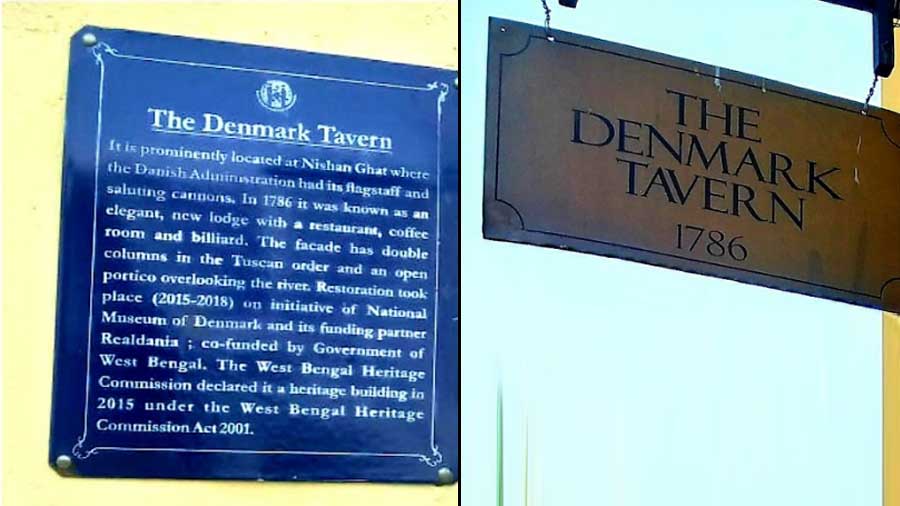
This riverside resort was originally set up in 1786 Somen Sengupta
Known as Denmark Tavern, this riverside resort was set up in 1786 by a British gentleman named James Parr, who made it an ideal place for business travellers to stay and relax in. It was built on the banks of the Hooghly just next to Nishan Ghat, the biggest trading point of the town.
The place became such a point of interest that in 1841, when a certain Charles Joseph illustrated a map of the area, he marked it as one of the important landmarks of Serampore.
European clientele
At the time of its inception, the clientele was purely European. For a large section of them, the tavern was an excellent place to enjoy evening drinks and indoor games or read newspapers, all with a cool river breeze blowing. Its comfortable, airy rooms and authentic food were added attractions for all those who had left their home shores behind to build a career in India.
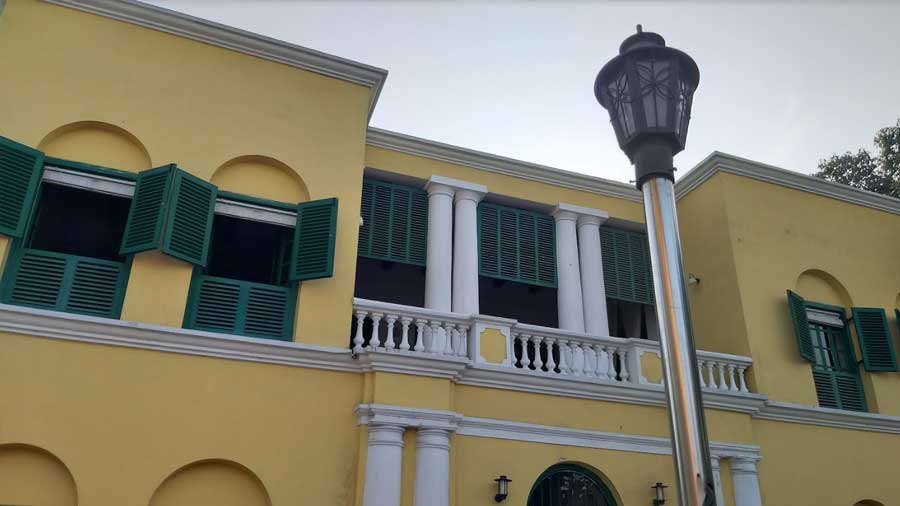
The renovated building was opened to the public on February 28, 2018, in the presence of the ambassadors of Denmark, Iceland, Finland, Sweden and Norway Somen Sengupta
The ownership of the tavern changed hands in 1788 to John Nicolas, and the present façade of the building was built then. However, with the decline of Serampore as a trading hub and with civic negligence, the tavern, along with many other colonial-era buildings, was left in ruins.
For a long time, the tavern was deserted and a large part of the building collapsed. All its vintage furniture, artifacts and crockery were stolen or misplaced. The portion of the building that stood standing was utterly dilapidated. It was full of debris and covered in vegetation — making it a breeding ground for snakes, rats and bats. After sundown, the place was a centre for illegal activities. What was once a proud piece of Serampore’s heritage had become a place of crime and decay.
Remade from rubble
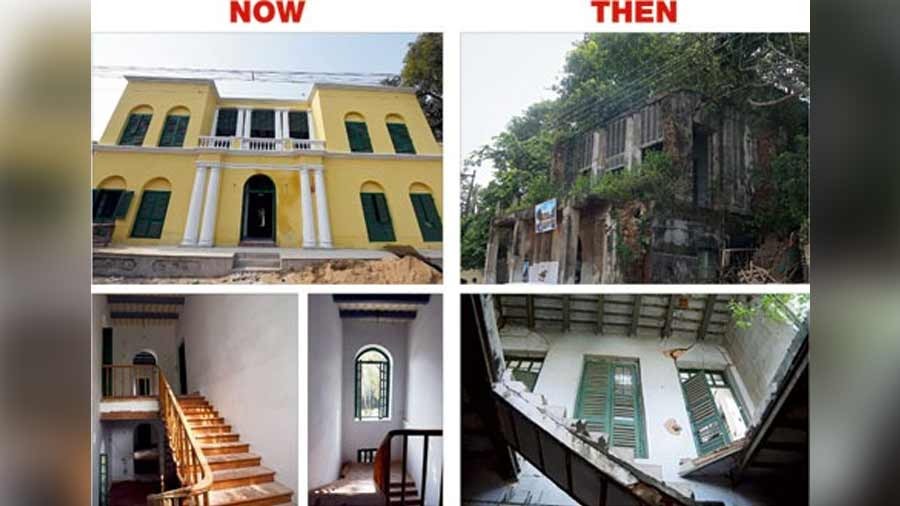
Before and after photos of the tavern TT archives
The reincarnation of Denmark Tavern is a story of how, with care, a heritage structure can be reclaimed from rubble.
The West Bengal government invited restoration experts, who with direct help from the National Museum of Denmark, Realdania (a Danish architecture company) and the West Bengal Heritage Commission, undertook a massive project to restore selective colonial buildings of Serampore. The project was also funded by the West Bengal tourism department.
Some of the best restoration engineers from Denmark and India worked together for years to restore several heritage structures of Serampore. And after lot of effort and difficulty, the Denmark Tavern was finally saved from oblivion. The best part was that the building’s renovation was done without making any major changes to its aesthetics.
A reopening that set the city abuzz
The renovated building was opened to the public on February 28, 2018, in the presence of the ambassadors of Denmark, Iceland, Finland, Sweden and Norway. It created such a buzz among local citizens that the entire town rushed to see its reopening.
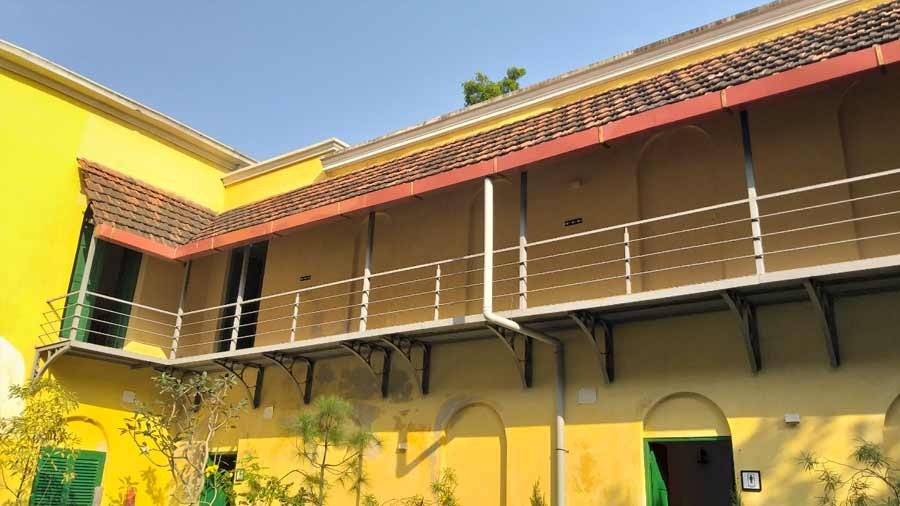
The building has a European-style running verandah Somen Sengupta
Presently, the colonial building is painted bright yellow and green, and has a double column façade in the Tuscan order. It has an open portico with long, covered verandah in the front and back. There is also a small lawn. The rooms upstairs are mostly river-facing with a wide lounge outside the doors.
Plenty to offer
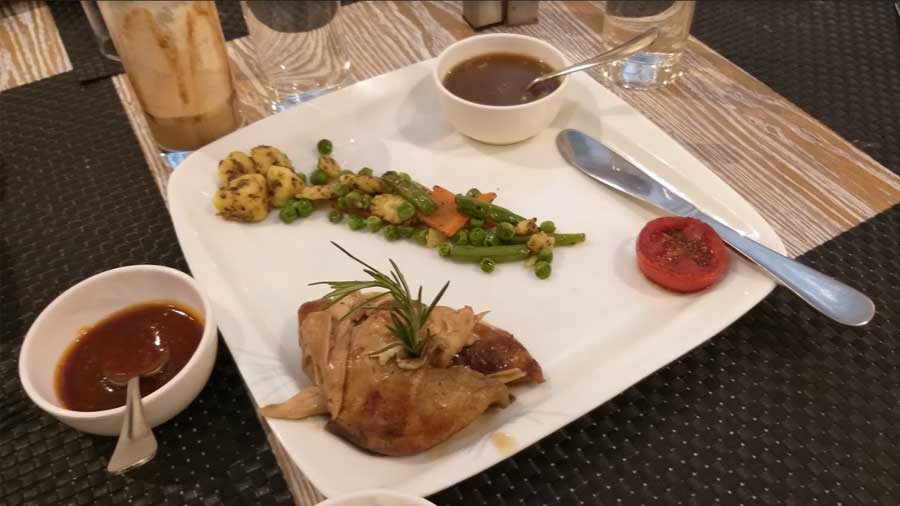
Grilled chicken with sauteed vegetables served at the restaurant Somen Sengupta
Today, the main attraction of the Denmark Tavern — managed by Apeejay Surrendra Park Hotels — is the large restaurant on the ground floor. A running balcony circling above the hall has added to its charm. The restaurant serves mouth-watering Indian, Bengali and Continental dishes at affordable prices. It also has a long list of beverages to offer.
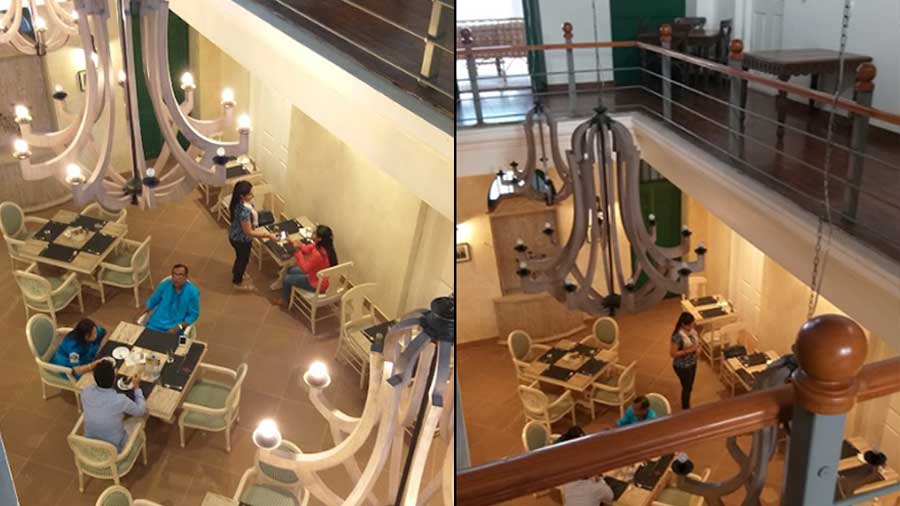
A view of the restaurant from the running balcony above Somen Sengupta
One can spend hours there with a glass of cold coffee or a steaming cup of tea. The menu is loaded with items from cheese lasagne to regular Indian dishes. The roasted chicken in black bean sauce with boiled vegetables and mashed potato is a must-try. The cheesy mushroom with garlic bread is another best-seller. Those who don’t want to experiment much can settle for pizzas and French fries. A tall glass of cold coffee with chocolate sauce and ice cream is like ambrosia.

Cold coffee with chocolate sauce and ice cream Somen Sengupta
The tavern also houses a bakery that has provisions of a café, where one can spend time with a hot coffee and English tea cake in the evening. From upstairs, the waters of the Hooghly river and the townscape of Barrackpore are visible. Though large ships do not pass through here anymore, country boats and motor-driven vessels still cross it daily.
The perfect pitstop
With the re-emergence of Denmark Tavern, Serampore is now back on the tourist (and food) map. People are visiting the town to witness the remains of its Danish days. And for many of them, a meal and a stay at this tavern are now an indispensable part of the tour.
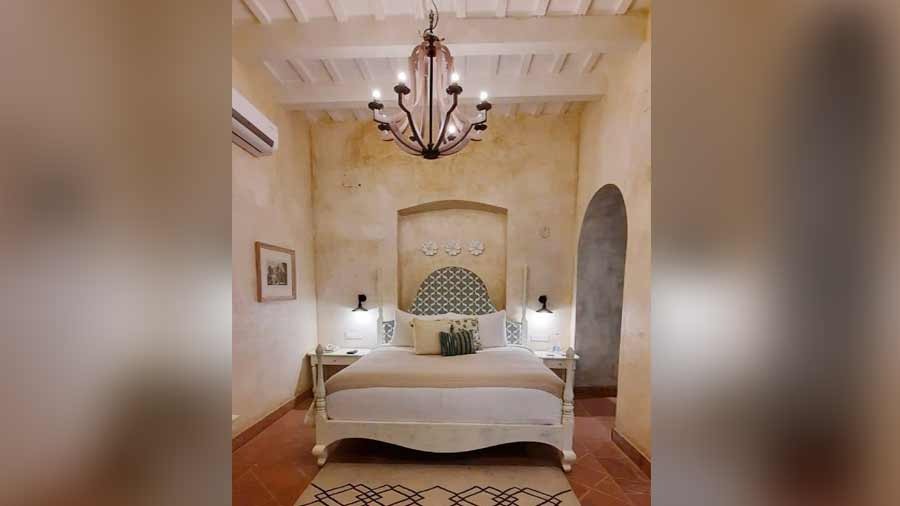
A room at the tavern @thedenmarktavernserampore/Facebook
As awareness of heritage preservation is growing, several groups who are working to protect the heritage of Bengal are now working to find more such places that need care and preservation for the sake of documenting our glorious past.
Somen Sengupta is passionate about heritage and travelling and has been writing about it for 26 years. When he is not executing duties as a senior executive in an MNC, he keeps an eye out for intriguing historical trivia and unearths forgotten stories. This also makes him an avid quizzer.
